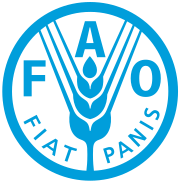Climate-Smart Agriculture edit
Climate-smart agriculture [1] forestry and fisheries (CSA) seeks to sustainably increase productivity, adapt to climate change, build resilience to shocks and variability, reduce and remove greenhouse gases (GHGs)(mitigation)and enhance the achievement of national food security and development goals. The priority of CSA is to strengthen livelihoods and food security through the improved management and use of natural resources and adopting appropriate methods and technologies for the production, processing and marketing of agricultural goods. To maximize the benefits and minimize the tradeoffs, CSA takes into consideration the social, economic, and environmental context where it will be applied. It also assesses the resource and energy implications and adopts an integrated land based approach using principles for ecosystem management and sustainable land and water use. [2] It should be noted that it may not be possible to achieve all the objectives of CSA, priorities need to be determined and benefits and tradeoffs evaluated. For example for low income, highly dependent economies where negative impacts of climate change are estimated to be significant, mitigation will be of lower priority. However if mitigation can be a co-benefit and allows access to climate financing, it would be included.
This article's use of external links may not follow Wikipedia's policies or guidelines. (June 2012) |
 | |
 Climate-Smart Agriculture emblem | |
| Abbreviation | CSA |
|---|---|
| Type | Specialized Agency |
| Website | www |
The Food and Agriculture Organization of the United Nations (FAO) (Italian: Organizzazione delle Nazioni Unite per l'Alimentazione e l'Agricoltura) is a specialised agency of the United Nations that leads international efforts to defeat hunger. Serving both developed and developing countries, FAO acts as a neutral forum where all nations meet as equals to negotiate agreements and debate policy. FAO is also a source of knowledge and information, and helps developing countries and countries in transition modernize and improve agriculture, forestry and fisheries practices, ensuring good nutrition and food security for all. Its Latin motto, fiat panis, translates into English as "let there be bread". As of 8 August 2008[update], FAO has 191 member states along with the European Union, Faroe Islands and Tokelau which are associate members.[3] It is also a member of the United Nations Development Group.[4]
Background edit
The idea of an international organization for food and agriculture emerged in the late 19th and early 20th century. In May–June 1905, an international conference was held in Rome, Italy, which lead to the creation of an International Agricultural Institute.[5]
Later in 1943, the United States President Franklin D. Roosevelt called a United Nations Conference on Food and Agriculture. Representatives from forty four governments gathered at the Homestead Hotel, Hot Springs, Virginia, from 18 May to 3 June. They committed themselves to founding a permanent organization for food and agriculture, which happened in Quebec City, Canada on October 16, 1945.[6] The First Session of the FAO Conference was held in the Chateau Frontenac at Quebec, Canada, from 16 October to 1 November 1945
- ^ Text of the Hague conference on Agriculture, Food Security and Climate Change in November 2010, and [1]
- ^ Text from FAO's definition of climate-smart agriculture
- ^ "List of FAO members". Fao.org. Retrieved 2010-10-15.
- ^ "UNDG Members". Undg.org. Retrieved 2012-06-14.
- ^ Text of the 1905 convention, from the website of the British Foreign and Commonwealth Office and supplementary protocol of 1926
- ^ "its origins, formation and evolution 1945-1981". FAO. Retrieved 2012-06-14.
